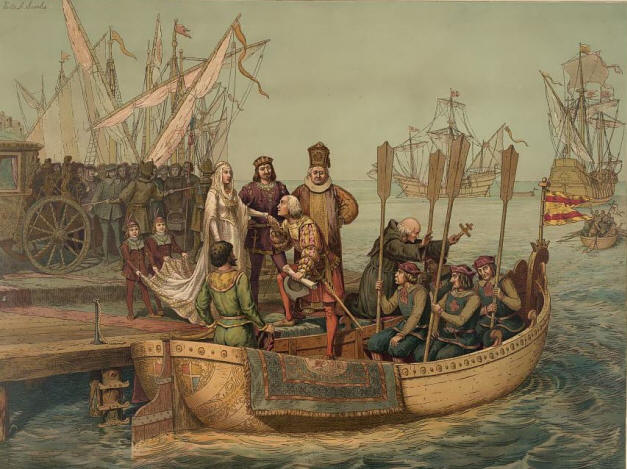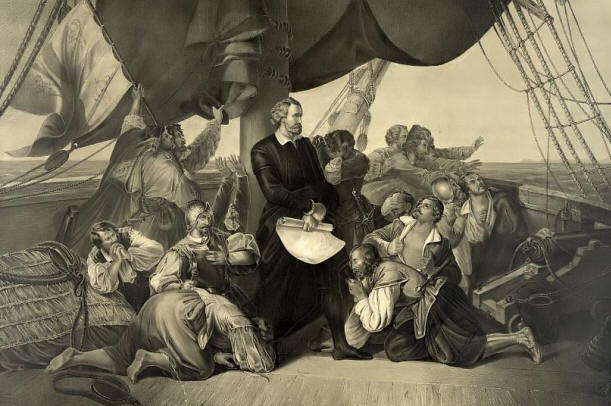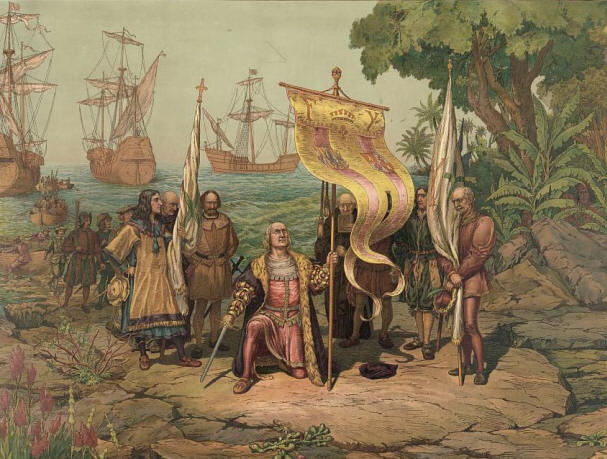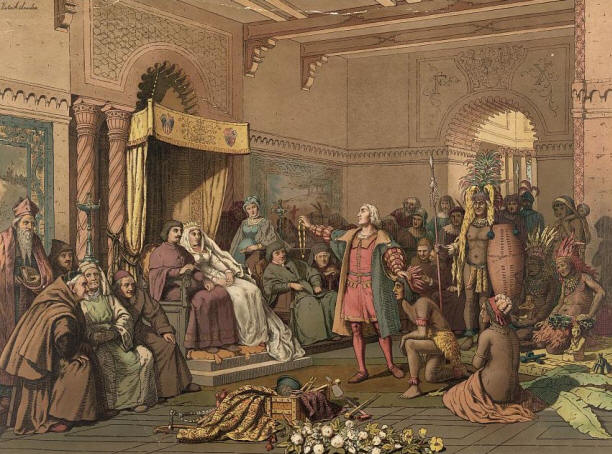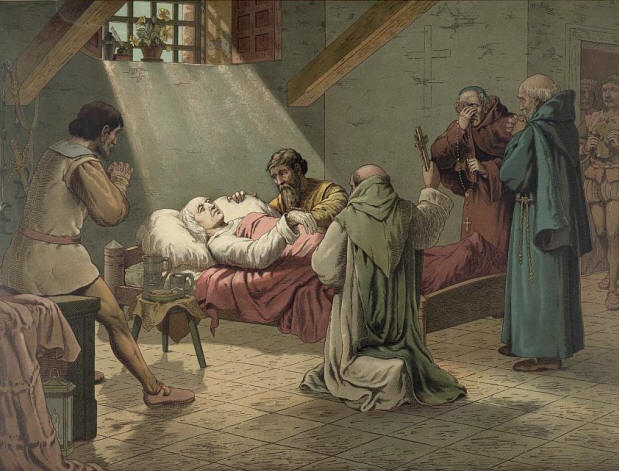Discovering of America
|
|
This Site:
|
Overview of The Discovery of the New WorldThe Nature of DiscoveryDiscovery has startled the world more than Conquest. Scarcely less surprising than some discoveries is the fact that the world has so often and for so long a time seemed to call for a discoverer in vain. Notably this is the case with the two most important discoveries that have ever been made, and both in the fifteenth century; that of the art of printing and the finding of a new world. For thousands of years the world had transcribed its thought into permanent legible characters by means of the stylus, the stalk of the papyrus, or the chisel. Slow and laborious were these methods, yet the splendid civilizations of the great Eastern Empires, the Egyptian, Assyrian, Babylonian, and the Medo-Persian, had produced their literature without the aid of the printing press, while the later civilizations of Greece and Rome; countries that gave to all coming time the noblest literatures, transcribed them by the painful process of the pen. The wonderful brain of the Greek could construct a Parthenon, the
wonder of the age; and the Roman reared that pile, so noble in its
simplicity—the Pantheon; yet neither could discern the little type
that should make the rapid multiplying of letters easy, nor place in
relief upon a block of wood the tracery of a single leaf; and the
wonder is no less, but increases as we consider the fact that two
vast continents, the half of an entire planet, had for so many
centuries eluded the gaze of men who went down to the sea in ships,
who for centuries had navigated an inland sea for two thousand
miles, while from Iceland and Jutland intrepid mariners and
Buccaneers had plowed the ocean with their keels. WAS AMERICA DISCOVERED BY THE NORSEMEN ?This has long been a disputed question. Norse scholarship has always insisted upon the discovery; scholars looking upon the matter from the outside have disputed the claim. One of the principal chains of evidence offered heretofore has been supplied by the Norse Sagas stories of mingled fact, romance and myth; but they have been distrusted, and up to recent time the preponderance of evidence has rather been against the Icelandic claim. But latterly new evidence has been brought to light, which seems to fully establish the fact of the discovery of America by the Norsemen from Iceland, about A. D. 1000. To cite the testimony of the Sagas, one must suffice for evidence in that direction. The Eyrbyggia Saga the oldest extant manuscript, remains of which date back to about the year 1300 has the following: "After the reconciliation between Steinhor and the people of Alpta-firth, Thorbrand's sons, Snorri and Thorleif, went to Greenland. Snorri went to Wineland (Vinland) the Good with Karlsefni; and when they were fighting with the Skrellings there in Wineland, Thorbrand Snorrason, a most valiant man, was killed." In the Icelandic Annals, also, the oldest of which is supposed to have been written in the south of Iceland about the year 1280, mention is made of Vinland. In the year 1121 it is recorded that "Bishop Eric Uppsi sought Wineland." The same entry is found in the chronological lists. These would seem to supply historical references to the Norse discovery of America, set down in such a manner as to indicate that the knowledge of the fact was widely diffused. One of the most interesting accounts taken from the Norse records is that found in a parchment discovered in a Monastery library of the Island of Flato, and which was transferred to Copenhagen and submitted to the inspection of Professor Rafn and other noted Icelandic scholars. Professor Rafn reproduces the record in his "Antiquities." The story is as follows: "In the year 996, while sailing from Iceland to Greenland, Biarne Heriulfson was driven southward by a storm, when they came in sight of land they had never before seen. Biarne did not try to land, but put his ship about and eventually reached Greenland. Four years after, in A. D. 1000, Leif the son of Eric the Red, sailed from Brattahlid in search of the land seen by Biarne. This land Leif soon discovered; he landed, it is supposed, on the coast of Labrador, which he named Helluland, because of the numerous flat stones found there, from the word hella, a flat stone. Finding the shore inhospitable, he again set sail and soon reached a coast thence it is not far to Vinland." Still again and the evidence must end with this citation in an old manuscript, written according to the Icelandic scholar Dr. Vigfasson, as early as 1260–1280, referring to the date A. D. 1000, the manuscript records: "Wineland the Good found. That summer King Olaf sent Leif to Greenland, to proclaim Christianity there. He sailed that summer to Greenland. He found in the sea men upon a wreck, and helped them. There found he also Wineland the Good, and arrived in the autumn at Greenland." It is objected to the discovery of America from Greenland that no runic (Scandinavian) inscriptions have been found in any part of the North American continent. But the answer to this objection is that the Northmen never pretended that they had colonized Vineland; they simply recounted their discovery of the country and their unsuccessful attempts to colonize it. Runic inscriptions, therefore, and other archaeological remains, are not to be expected in a region where no permanent settlements were made. Besides, as Mr. Reeves points out, the rigorous application of the test would make the discovery of Iceland itself disputable. In conclusion, as to this matter, we have only to add that the statements put forth seem not only to confirm what we meet with in the Sagas, but, taken by themselves alone, they seem to fully establish the fact of the discovery of America by the Icelanders, even had the Sagas never been written. And now leaving the Norsemen and their discoveries we come to THE PERSONAL HISTORY OF COLUMBUS.
Christopher Columbus (or Columbo in Italian) was the son of Dominico Columbo and Susannah Fontanarossa his wife. The father was a wool carder, a business which seems to have been followed by the family through several generations. He was the oldest of four children, having two brothers. Bartholomew and Giacomo (James in English, in Spanish, Diego), and one sister. Of the early years of Columbus little is known. It is asserted by some that Columbus was a wool comber - no mean occupation in that day - and did not follow the sea. On the other hand, it is insisted and Tarducci and Harrisse hold to that view that, whether or not he enlisted in expeditions against the Venetians and Neapolitans (and the whole record is misty and uncertain), Columbus at an early age showed a marked inclination for the sea, and his education was largely directed along the lines of his tastes, and included such studies as geography, astronomy, and navigation. It is certain that when Columbus arrived at Lisbon he was one of the best geographers and cosmographers of his age, and was accustomed to the sea from infancy. Happily his was an age favorable for discovery. The works of travel were brought to the front. The closing decade of the fifteenth century was a time of heroism, of deeds of daring, and discovery. Rude and unlettered to some extent, yet it was far more fruitful, and brought greater blessings to the world than are bestowed by the effeminate luxury which often characterizes a civilization too daintily pampered, too tenderly reared. Life then was at least serious. Improvement in Navigation ToolsRight here it may be in place to state how invention promoted Columbian discovery. The compass had been known for six hundred years. But at this time the quadrant and sextant were unknown; it became necessary to discover some means for finding the altitude of the sun, to ascertain one's distance from the equator. This was accomplished by utilizing the Astrolabe, an instrument only lately used by astronomers in their stellar work. This invention gave an entirely new direction to navigation, delivering seamen from the necessity of always keeping near the shore, and permitting the little ships to sail free amidst the immensity of the sea, so that a ship that had lost its course, formerly obliged to grope its way back by the uncertain guidance of the stars, could now, by aid of compass and astralobe, retrace its course with ease. Much has justly been ascribed to the compass as a promoter of navigation, but the astralobe was surely just as important. Columbus Approaches the King of PortugalThe best authorities place the arrival of Columbus at Lisbon about the year 1470. It is probable Columbus was known by reputation to Alfonso V, King of Portugal. It is unquestionable that Columbus was attracted to Portugal by the spirit of discovery which prevailed throughout the Iberian peninsula, fruits of which were just beginning to be gathered. Prince Henry of Portugal, who was one of the very first of navigators, if not the foremost explorer of his day, had established a Naval College and Observatory, to which the most learned men were invited, while under the Portuguese flag the greater part of the African coast had been already explored. Having settled in Lisbon, at the Convent of All Saints, Columbus formed an acquaintance with Felipa Monis de Perestrello, daughter of Bartholomew de Perestrello, an able navigator with whom Prince Henry had made his first discovery. The acquaintance soon ripened into love, and Columbus made her his wife. Felipa's father soon died, and then with his wife and her mother Columbus moved to Porte Santo, where a son was born to them, whom they named Diego. Felipa hence forth disappears from history; there is no further record of her. At Porto Santo Columbus supported his family and helped sustain his aged father. Meanwhile Columbus was imbibing to the full the spirit of discovery so widely prevalent. It was not his wife who materially helped him at this time, but his mother-in-law, who, observing the deep interest that Columbus took in all matters of exploration and discovery, gave him all the manuscripts and charts which her husband had made. These, along with his own voyages to some recently discovered places, only renewed the burning desire for exploration and discovery. But the sojourn at Portugal must be briefly passed over. The reports that came to his ears while living at Porto Santo only intensified his convictions of the existence of an empire to the West. He heard of great reeds and a bit of curiously carved wood seen at sea, floating from the West; and vague rumors reached him at different times, of "strange lands" in the Atlantic - most if not all of them mythical. But they continued to stimulate interest as they show the state of public thought at that time respecting the Atlantic, whose western regions were all unknown. All the reports and all the utterances of the day Columbus watched with closest scrutiny. He secured old tomes for fullest information as to what the ancients had written or the moderns discovered. All this served to keep the subject fresh in his mind, for his convictions were constantly strengthened by contemporary speculators. Toscanelli, an Italian mathematician, had written, at the instance of King Alfonso, instructions for a western route to Asia. With him Columbus entered into correspondence, which greatly strengthened his theories. Constant thought and reflection resulted in his conception of a course to take, which, followed for a specific time, would result in the discovery of an empire. He would subdue a great trans-Atlantic empire, and from its riches he would secure the wealth to devote to expeditions for recovering the Holy Land, and so he would pay the Moors dearly for their invasion of the Iberian peninsula, a truly fanciful but not a wholly unreasonable conception, as the times were. At last he found means to lay his project before the King of Portugal. But the royal councilors treated the attempt to cross the Atlantic as rash and dangerous, and the conditions required by Columbus as exorbitant. The adventurous King, John II, had more faith in his scheme than his wise men, and, with a dishonesty not creditable to him, attempted at this time to reap the benefit of Columbus' studies and plans by sending out an expedition of his own in the direction and by the way traced in his charts. But the skill and daring of Columbus were wanting, and at the first trouble at sea the expedition sought safety in flight. It turned back to the Cape de Verde islands, and the officers took revenge for their disappointment by ridiculing the project of Columbus as the vision of a day dreamer. Columbus's brother Bartholomew had endeavored about this time to interest the British monarch in the project, but the first of the Tudors had too much to do in quelling insurrection at home, and in raising revenues by illegal means, to spend any moneys on visionary projects. Henry III would have none of him. Columbus at the Franciscan MonasteryMeantime, indignant at the infamous treatment accorded him, and with his ties to Portugal already dampened by the death of his wife, he determined to shake the dust of Portugal off his feet, and seek the Court of Spain. He would start at once for Cordova, where the Spanish Court then was. Leaving Lisbon secretly, near the close of 1484, he chose to follow the sea coast to Palos, instead of taking the direct inland route, and most happily so; for, in so doing he was to gain a friend and a most important ally. Weary and foot sore, on his journey, he finally arrived at Palos, then a small port on the Atlantic, at the mouth of the Tinto, in Andalusia; here hunger and want drove him to seek assistance from the charity of the Monks, and ascending the steep mountain road to the Franciscan monastery of Santa Maria de La Rabida, he met the pious prior, Father Juan Perez, who, struck with his imposing presence, despite his sorry appearance, entered into conversation with him.
COLUMBUS'S ARRIVAL AT THE CONVENT OF LA RABIDA.As the interview grew in interest to both the parties, Columbus was led to impart to the prior his great project, to the prior's increasing wonder, for in Palos the spirit of exploration was as large as in Lisbon. Columbus was invited to make the Convent his place of sojourn, an invitation he was only too glad to accept. Then Father Perez sent for his friend, a well known geographer of Palos, and, deeply interested in all that related to exploration and the discovery of new lands, the three took the subject into earnest consideration, thorough discussion of the question being had. It was not long before Father Perez became deeply interested in the plans of Columbus. To glorify God is the highest aim to which one can address himself; of that feeling Father Perez was thoroughly possessed; and how could he more fully glorify him than by aiding in the discovery of new lands and the spreading of Christianity there? Impelled by this feeling, he urged Columbus to proceed at once to Cordova, where the Spanish Court then was, giving him money for his journey, and a letter of commendation to his friend, the father prior of the monastery of El Prado Fernando de Talavera, the queen's Confessor, and a person of great influence at Court. There was hope, and there was a period of long and weary waiting yet before him. Columbus Approaches the Spanish CourtArriving at Cordova, Columbus found the city a great military camp, and all Spain aroused in a final effort to expel the Moors. Fernando, the Confessor, was a very different man from Perez, and instead of treating Columbus kindly, received him coolly, and for a long while actively prevented him from meeting the king. The Copernican theory, though held by some, was not at this time established. At length, through the friendship of de Quintanilla, Comptroller of the Castilian Treasury, Geraldini, the Pope's nuncio, and his brother, Allessandro, tutor of the children of Ferdinand and Isabella, Columbus was made known to Cardinal Mendoza, who introduced him to the king. Ferdinand listened to him patiently, and referred the whole matter to a council of learned men, and it was not till 1491 (six years later) that the Commission reported the project "vain and impossible, and not becoming great princes to engage in on such slender grounds as had been adduced." Columbus Before Queen Isabella and the Spanish CourtThe report of the Commission seemed a death blow to the hopes of Columbus. Disappointed and sick at heart, and disgusted at six years of delay, Columbus turned his back on Spain, "indignant at the thought of having been beguiled out of so many precious years of waning existence." Determined to lay his project before Charles VIII, of France, he departed, and stopped over at the little Monastery of La Rabida, from whose Prior, Juan Perez, six years before, he had departed with such sanguine hopes, for Cordova. The good friar was greatly moved. Finally he concluded to make another and final effort. Presuming upon his position as the queen's Confessor, Perez made an appeal direct to Isabella, and this time with the result that an interview was arranged, at which Isabella was present. His proposals would have at once been accepted but that Columbus demanded powers* which even de Talavera pronounced "arbitrary and presumptuous," though they were of like character with those conceded by Portugal to Vasco de Gamba. Angered and indignant at the rejection of his terms, which were conditioned only upon his success, Columbus impulsively left the royal presence, and taking leave of his friends, set out for France, determined to offer his services to Louis XII.
Isabella Agrees to Support Christopher Columbus's VoyageBut no sooner had Columbus gone, than the queen, who we may believe regretted the loss of possible glory of discovery, hastily dispatched a messenger after him, who overtook him when two leagues away and brought him back. Although Ferdinand was opposed to the project, Isabella concluded to yield to Columbus his terms and agreed to advance the cost, 14,000 florins, about $7,000, from her own revenues, and so to Spain was saved the empire of a New World. On May 12 Columbus took leave of the king and queen to superintend the fitting out of the expedition at the port of Palos. The hour and the man had at last met. Fitting Out the Expedition
In three months the expedition was ready to sail. The courage of Columbus in setting sail in untried waters becomes more evident when we consider the size of the ships comprising the little expedition. They were three in number; the largest of them, the Santa Maria, was only ninety feet long, being about the size of our modern racing yachts. Her smaller consorts, the Pinta and the Nina, were little caravels, very like our fishing smacks, without any deck to keep the water out. The Santa Maria had four masts, of which two were square rigged, and two fitted with lateen sails like those used on the Nile boats; this vessel Columbus commanded. Martin Alonzo Pinzon commanded the Pinta, and his brother, Vincente Yanez Pinzon, the Nina. The fleet was now all ready for sea; but before setting sail Columbus and most of his officers and crew confessed to Friar Juan Perez, and partook of the Sacrament. Surely such an enterprise needed the blessing of heaven, if any did! Christopher Columbus bidding farewell to the Queen of Spain on his departure for the New World, August 3, 1492It was before sunrise on Friday morning, August 3, 1492, that Columbus, with 30 officers and adventurers and 90 seamen, in all 120 souls, set sail, "in the name of Christ," from behind the little island of Saltes. Those inclined to be superstitious regarding Friday will do well to note that it was on a Friday Columbus set sail from Palos; it was on Friday, the 12th of October, that he landed in the New World; on a Friday he set sail homeward; on a Friday, again, the 15th of February, 1493, land was sighted on his return to Europe, and that on Friday, the 15th of March, he returned to Palos. The story of that eventful trip has never ceased to charm the world, nor ever will so long as the triumphs of genius, the incentives of religion, and the achievements of courage have interest for mankind. It was Columbus's intention to steer southwesterly for the Canary Islands, and thence to strike due west due to misconception occasioned by the very incorrect maps of that period. On the third day out the Pinta's rudder was found to be disabled and the vessel leaking, caused, doubtless, by her owner, who did not wish his vessel to go, the ship having been impressed and thinking to secure her return. Instead of this, Columbus continued on his course and decided to touch at the Canaries, which he reached on the 9th. Here he was detained for some weeks, till he learned from a friendly sail that three Portuguese war vessels had been seen hovering off the island Gomera, where he was taking in wood, water, and provisions. Apprehensive, and probably rightly so, that the object was to capture his fleet, Columbus lost no time in putting to sea. AND NOW FOR THE NEW WORLD.It was early morning on the 6th of September that Columbus again set sail, steering due west, on an unknown sea. He need fear no hostile fleets, and he was beyond the hindrance of plotting enemies on shore; and yet so far from escaping trouble it seemed as if he had but plunged into deeper tribulations and trials than ever. As the last trace of land faded from view the hearts of the crews failed them. They were going they knew not where; would they ever return? Tears and loud lamentings followed, and Columbus and his officers had all they could do to calm the men. After leaving the Canaries the winds were light and baffling, but always from the East. On the 11th of September, when about 450 miles west of Ferro, they saw part of a mast floating by, which, from its size, appeared to have belonged to a vessel of about 120 tons burden. To the crew this meant the story of wreck; why not prophetic of their own? The discovery only added to their fears. And now a remarkable and unprecedented phenomenon presented itself. On the 13th of September, at night fall, Columbus, for the first time in all his experience, discovered that the needle did not point to the North star, but varied about half a point, or five and a half degrees to the northwest. As he gave the matter close attention Columbus found the variation to increase with every day's advance. This discovery, at first kept secret, was early noticed by the pilots, and soon the news spread among the crews, exciting their alarm. If the compass was to lose its virtues, what was to become of them on a trackless sea? Columbus invented a theory which was ingenious but failed wholly to allay the terror. He told them that the needle pointed to an exact point, but that the star Polaris revolved, and described a circle around the pole. Polaris does revolve around a given point, but its apparent motion is slow, while the needle does not point to a definite fixed point. The true explanation of the needle variations sometimes it fluctuates thirty or forty degrees is to be found in the flowing of the electrical currents through the earth in different directions, upon which the sun seems to have an effect. Columbus took observations of the sun every day, with an Astrolabe, and shrewdly kept two logs every day (SEE COLUMBUS JOURNAL). One of these, prepared in secret, contained the true record of the daily advance; the other, showing smaller progress, was for the crew, by which means they were kept in ignorance of the great distance they were from Spain. INDICATIONS OF LAND.On the 14th of September the voyagers discovered a water wagtail and a heron hovering about the ships, signs which were taken as indicating the nearness of land, and which greatly rejoiced the sailors. On the night of the 15th a meteor fell within five lengths of the Santa Maria. On the 16th the ships entered the region of the trade winds; with this propitious breeze, directly aft, the three vessels sailed gently but quickly over a tranquil sea, so that for many days not a sail was shifted. This balmy weather Columbus constantly refers to in his diary, and observes that "the air was so mild that it wanted but the song of nightingales to make it like the month of April in Andalusia." On the 18th of September the sea, as Columbus tells us, was "as calm as the Guadalquiver at Seville." Air and sea alike continued to furnish evidences of life and indications of land, and Pinzon, on the Pinta, which, being the fastest sailer, generally kept the lead, assured the admiral that indications pointed to land the following day. On the 19th, soundings were taken and no bottom found at two hundred fathoms. On the 20th, several birds visited the ships; they were small song birds, showing they could not have come a very long distance; all of which furnished cause for encouragement. But still discontent was growing. Gradually the minds of the men were becoming diseased through terror, even the calmness of the weather increasing their fears, for with such light winds, and from the east, too, how were they ever to get back? However, as if to allay their feelings, the wind soon shifted to the southwest. A little after sunset on the 25th, Columbus and his officers were examining their charts and discussing the probable location of the island Cipango,* which the admiral had placed on his map, when from the deck of the Pinta arose the cry of " Land ! Land ! " At once Columbus fell on his knees and gave thanks to Heaven. Martin Alonzo and his crew of the Pinta broke out into the Gloria in Excelsis," in which the crew of the Santa Maria joined, while the men of the Nina scrambled up to the masthead and declared that they, too, saw land. At once Columbus ordered the course of the vessels to be changed toward the supposed land. In impatience the men waited for the dawn, and when the morning appeared, lo ! the insubstantial pageant had faded, the cloud vision, for such it was, had vanished into thin air. The disappointment was as keen as the enthusiasm had been intense; silently they obeyed the admiral's order, and turned the prows of their vessels to the west again.
A week passed, marked by further variations of the needle and flights of birds. The first day of October dawned with such amber weather as is common on the Atlantic coast in the month of "mists and yellow fruitfulness." The pilot on Columbus's ship announced sorrowfully that they were then 520 leagues, or 1560 miles, from Ferro. He and the crew were little aware that they had accomplished 707 leagues, or nearly 2200 miles. And Columbus had a strong incentive for this deception; for, had he not often told them that the length of his voyage would be 700 leagues? and had they known that this distance had already been made, what might they not have done! On the 7th of October the Nina gave the signal for land, but instead of land, as they advanced the vision melted and their hopes were again dissipated. The ship had now made 750 leagues and no land appeared. Possibly he had made a mistake in his latitude; and so it was that, observing birds flying to the southward, Columbus changed his course and followed the birds, recalling, as he says in his journal, that by following the flight of birds going to their nesting and feeding grounds the Portuguese had been so successful in their discoveries. On Monday, the 8th, the sea was calm, with fish sporting everywhere in great abundance; flocks of birds and wild ducks passed by. Tuesday and Wednesday there was a continual passage of birds. On the evening of this day, while the vessels were sailing close together, mutiny suddenly broke out. The men could trust to signs no longer. With cursing and imprecation they declared they would not run on to destruction, and insisted upon returning to Spain. Then Columbus showed the stuff he was made of. He and they, he said, were there to obey the commands of their Sovereigns; they must find the Indies. With unruffled calmness he ordered the voyage continued. On Thursday, the 11th, the spirit of mutiny gave way to a very different feeling, for the signs of the nearness of land multiplied rapidly. They saw a green fish known to feed on the rocks, then a branch with berries on it, evidently recently separated from a tree, floated by them, and above all, a rudely carved staff was seen. Once more gloom and mutiny gave way to sanguine expectation. All the indications pointing to land in the evening, the ships stood to the west, and Columbus, assembling his men, addressed them. He thought land might be made that night, and enjoined that a vigilant lookout be kept, and ordered a double watch set. He promised a silken doublet, in addition to the pension guaranteed by the Crown, to the one first seeing land. Columbus Reaches the New WorldThat night, the ever memorable night of Thursday, opening into the morning of Friday, the 12th of October, not a soul slept on any vessel. The sea was calm and a good breeze filled the sails, moving the ships along at twelve miles an hour; they were on the eve of an event such as the world had never seen, could never see again. The musical rippling of the waves and the creaking of the cordage were all the sounds that were audible, for the birds had retired to rest. The hours passed slowly by. It was just past midnight when the admiral, with restless eye, sought to penetrate the darkness. Then a far off light came to his vision. Calling Guiterrez, a court officer, he also saw it. At two in the morning a gun from the Pinta, which led the other boats, gave notice that land was at last found. A New World had indeed been discovered. The hopes of years had attained their fruition. It was Rodrigo de Triana, a seaman, who first saw land. He received neither promised doublet nor pension. Friday, the 12th of October, 1492, corresponding to the 21st of October, 1492, of the present calendar, was the ever memorable day. The first sight of the new world - Columbus discovering AmericaThe morning light came, and, lifting the veil that had concealed the supreme object of their hopes, revealed a low, beautiful island, not fifty miles long, and scarcely two leagues away. Columbus gave the signal to cast anchor and lower the boats, the men to carry arms. Dressed in a rich costume of scarlet, and bearing the royal standard, upon which was painted the image of the crucified Christ, he took the lead, followed by the other captains, Pinzon and Yanez. Columbus was the first to land; and as soon as he touched the shore he fell down upon his knees and fervently kissed the blessed ground " three times, returning thanks to God for the great favor bestowed upon him. The others followed his example; and then, recognizing the Providence which had crowned his efforts with success, he gave the name of the Redeemer San Salvador to the discovered island, which was called by the natives " Guanahani." * And now the crews, who but a few days previously had reviled and cursed Columbus, gathered around, asking pardon for their conduct and promising complete submission in future.
Columbus supposed at last he had reached the opulent land of the Indies, and so called the natives Indians. But it was an island, not a continent or an Asiatic empire, he had found; an island very large and level, clad with the freshest trees, with much water in it, a vast lake in the middle, and no mountains." Columbus Landing in the New WorldThe natives dwelling on the island were found to be a well proportioned people with fine bodies, simple in their habits and customs, friendly, though shy in manner, and they were perfectly naked. They thought the huge ships to be monsters risen from the sea or gods come down from heaven. Presents were exchanged with them, including gold bracelets worn by the natives. Inquiry was made as to where the gold came from. For answer the natives pointed by gestures to the southwest. Columbus tried to induce some of the natives to go with him and show where the land of gold was to be found. But this they refused to do; so on the next day (Sunday, the 14th), taking along by force seven natives, that he might instruct them in Spanish and make interpreters of them, he set sail to discover, if possible, where gold was to be had in such abundance, and which, he thought, must be Cipango. He was, of course, in the midst of the Bahama group, and did not have to sail far to discover an island. On the 15th he discovered the island Conception. On the third day he repeated the forms of landing and took possession, as he did also on the 16th, when he discovered an island which he called Fernandina, known to be the island at present called Exuma. On the 19th another island was discovered, which Columbus named Isabella, and which he declared to be " the most beautiful of all the islands " he had seen. The breezes brought odors as spicy as those from Araby the Blest; palm trees waved their fringed banners to the wind, and flocks of parrots obscured the sky. It was a land where every prospect pleased. But no it was not a land of gold. Leaving Isabella after a five days' sojourn, on Friday, the 26th of October, he entered the mouth of a beautiful river on the northeast terminus of the island of Cuba, where sky and sea seem to conspire to produce endless halcyon days, for the air was a continual balm and the sea bathes the grasses, which grow to the water's edge, whose tendrils and roots are undisturbed by the sweep of the tides. Upon the delights that came to Columbus in this new found paradise we cannot dwell; admiration and rapture mingled with the sensations that swept over the soul of the great navigator as he contemplated the virgin charms of a new world won by his valor. But the survey of succeeding events must be rapid. From the 28th of October till November 12th Columbus explored the island, skirting the shore in a westerly direction. He discovered during that time tobacco, of which he thought little, but which, singularly enough, proved more productive to the Spanish Crown than the gold which he sought but did not find. On the 20th of November Columbus was deserted by Martin Pinzon, whose ship, the Pinta, could outsail all the others. Martin would find gold for himself. This was a kind of treachery which too often marred the story of Spanish exploration in the New World. For two weeks after the Pinta's desertion Columbus skirted slowly along the coast of Cuba eastwardly till he doubled the cape. Had he only kept on what was now a westerly course he would have discovered Mexico. But it was not to be. Before sailing he lured on board six men, seven women, and three children, a proceeding which nothing can justify. Taking a southwesterly course, on Wednesday, December 5th, Columbus discovered Haiti and San Domingo, which he called Hispaniola, or Little Spain. The next day he discovered the island Tortuga, and at once returned to Haiti, exploring the island; there, owing to disobedience of orders, on Christmas morning, between midnight and dawn, the Santa Maria was wrecked upon a sand bank, near the present site of Port au Paix. A sorry Christmas for Columbus, indeed ! The situation was now critical. The Pinta, with her mutinous commander and crew, was gone; the Santa Maria was a wreck. But one little vessel remained, the little, undecked Nina. Suppose she should be lost, too? how would Spain ever know of his grand discoveries? Two things were necessary: he must at once set out on his return voyage, and some men must be left behind. The first thing he did was to build, on a bay now known as Caracola, a fort, using the timbers of the wrecked Santa Maria. In this he placed thirty nine men. Nature would surely give them all the shelter and provisions they needed. COLUMBUS RETURNS TO SPAIN.It was not until Friday, January 4, 1493, that the weather was sufficiently favorable so that Columbus could hoist sail and stand out of the harbor of the Villa de Navidad, as he named the fort, because of his shipwreck, which occurred on the day of the Nativity. Two days later the ship Pinta was encountered. Pinzon on the first opportunity boarded the Nina, and endeavored, but unsuccessfully, to explain his desertion and satisfy the admiral. The two vessels put into a harbor on the island of Cuba for repairs, and continued to sail along the coast, now and then making a harbor. On Wednesday, the 16th day of January, 1493, they bade farewell to the Queen of the Antilles, and then the prows of the Nina and the Pinta, the latter the slower sailer because of an unsound mast, were turned toward Spain, 1450 leagues away. It is not possible within the limits of this chapter to follow Columbus from day to day as he sails a sea now turbulent and tempestuous, as if to show its other side, in marked contrast to the soft airs and smooth waters that had greeted the voyagers when their purpose held "To sail beyond the sunset and the baths Of all the western stars." Nor can we follow with minuteness Columbus in his subsequent career. He had made the greatest discovery of his or any other age: he had found the New World, and this, more than anything else, has to do with "The Story of America." Columbus and Indians from the New World at the court of BarcelonaIt was on Friday, March 15, 1493, just seven months and twelve days after leaving Palos, that Columbus dropped anchor near the island of Saltes. It was not until the middle of April that he reached Barcelona, where the Spanish Court was sitting. As he journeyed to Court his procession was a most imposing one as it thronged the streets, his Indians leading the line, with birds of brilliant plumage, the skins of unknown animals, strange plants and ornaments from the persons of the dusky natives shimmering in the air. When he reached the Alcazar or palace of the Moorish Kings, where Ferdinand and Isabella were seated on thrones, the sovereigns rose and received him standing. Then they commanded him to sit, and learned from him the story of his discovery. Then and there the sovereigns confirmed all the dignities previously bestowed. Columbus's Second Voyage to the New WorldThe rejoicing over, the good news spread everywhere, and Columbus was the hero of the civilized world. Ferdinand and Isabella at once addressed themselves to the task of preserving and extending their conquests, and a fleet of seventeen vessels and fifteen hundred men was organized to prosecute further discovery. It was on September 25, 1493, that Columbus set sail with his fleet. On the 3d of November he sighted land, a small, mountainous island, which Columbus called Dominica, after Sunday, the day of discovery. Then again they set sail, and in two weeks discovered several islands in the Caribbean waters. It was not till November 27th that Columbus arrived in the harbor of La Navidad. He fired a salute, but there was no response. On landing the next morning, he found the fortress gone to pieces and the tools scattered, with evidences of fire. Buried bodies were discovered twelve corpses those of white men. Of the forty who had been left there, not one was present to tell the tale. But all was soon revealed, and a harrowing, sorrowful tale it was. From a friendly chief, Guacanagari whom Columbus at first suspected of treachery, and was never quite satisfied of his innocence it was learned that mutiny, perfidy, and lust had aroused resentments and produced quarrels, resulting in a division into two parties, who, separating and wandering off, were easily overwhelmed by the superior numbers of the incensed natives. Having discovered the Windward Islands, Jamaica, and Porto Rico, he founded a new colony in Hispaniola (Haiti or San Domingo), which he named Isabella, in honor of his queen. The place had a finer harbor than the ill fated port of the Nativity. He named his brother Bartolommeo lieutenant governor, to govern when he should be absent on his explorations. On February 2, 1494, Columbus sent back to Spain twelve caravels under the command of Antonio de Torres, retaining the other five for the use of the colony, with which he remained. The vessels carried specimens of gold and samples of the rarest and most notable plants. Besides these, the ships carried to Spain five hundred Indian prisoners, who, the admiral wrote, might be sold as slaves at Seville an act which places an indelible stain upon the brilliant renown of the great admiral: that one inhuman act admits of no palliation whatever. Of the troubles that ensued it is impossible to give any account in detail. Men returning, disappointed at not finding themselves enriched, complained of Columbus as a deceiver, and he was charged with cruelty, and, indeed, there was scarcely a crime that presumably was not laid at his door. Then troubles broke out in the colony; the friar, incensed at Columbus, excommunicated him, and the admiral, in return, cut off his rations. Then the men, in the absence of Columbus, off on trips of exploration, gave way to rapine and passion, and the poor natives had no other means than flight to save their wives and daughters. Matters proceeded from bad to worse, the colony growing weaker through dissension. Finally four vessels from Spain arrived at Isabella, in October, 1495, laden with welcome supplies. These were in charge of Torres, who was accompanied by a royal commissioner, Aquado, who was empowered to make full investigation of the charges brought against Columbus. It was evident to the admiral that he should take early occasion to return to Spain and make explanation to his sovereigns. Accordingly, in the spring of 1496, Columbus set sail for Cadiz, where he arrived on June 11, 1496. He was well received, and was successful in defending himself against the many charges and the clamor raised against him. Ships for a third voyage were promised him, but it was not until the late spring of 1498 that the expedition was ready for sailing. COLUMBUS SETS FORTH ON A THIRD EXPEDITION.On May 30, 1498, with six ships, carrying two hundred men, besides sailors, Columbus set out on his third expedition. Taking a more southerly course, Columbus discovered the mouth of the Orinoco, which he imagined to be the great river Gihon, mentioned in the Bible (Genesis ii, 13) as the second river of Paradise ; so sadly were our admiral's geography and topography awry ! Columbus also discovered the coast of Para and the islands of Trinidad, Margarita, and Cabaqua, and then bore away for Hispaniola. It was the old story told over again, with sickening disappointment. He found the colony was more disorganized than ever. For more than two years Columbus did his best to remedy the fortunes of the colony. At last an insurrection broke out. It was necessary to act promptly and decisively. Seven ringleaders were hanged and five more were sentenced to death. At this time the whole colony was surprised by the arrival at St. Domingo of Francisco de Bobadilla, sent out by Ferdinand and Isabella as governor, and bearing authority to receive from Columbus the surrender of all fortresses and public property. Calumny had done its work! Bobadilla then released the five men under sentence of death, and finally, when Columbus and Bartholomew arrived at St. Domingo, Bobadilla caused them both to be put in chains, to be sent to Spain. Seldom has a more touching, more cruel, more pathetic picture been presented in the world's sad history of cruelty and wrong ! Shocked as the master of the ship was at the spectacle of Columbus in irons, he would have taken them off, but Columbus would not allow it; those bracelets should never come off but at the command of his Sovereigns! It was early in October, 1500, that the ships with the three prisoners, Columbus and his brothers, Bartholomew and Diego, left Isabella. On the 25th of November, after an unusually comfortable passage, the vessels entered the harbor of Cadiz. The sight of the venerable form of Columbus in chains as he passed through the streets of Cadiz, where he had been greeted with all the applause of a conqueror, was more than the public would suffer. Long and loud were the indignant protests that voiced the popular feeling. The news of the state of affairs coming to Isabella, a messenger was dispatched with all haste to Cadiz, commanding his instant release. When the poor broken hearted admiral came into the queen's presence Isabella could not keep the tears back while he, affected at the sight, threw himself at the feet of his sovereigns, his emotion bursting out in uncontrollable tears and sobs and this was Columbus's reward for discovering a new world ! HIS LAST VOYAGE.The rest is soon told. The acts of the miserable creature, Bobadilla, were instantly disapproved, and he was recalled, but was drowned on his way home. Columbus, however, was not allowed to return to Hispaniola, but after two years' waiting sailed from Cadiz, May 9, 1502, with four vessels and a hundred and fifty men, to search for a passage through the sea now known as the Gulf of Mexico. It was the middle of June when Columbus touched at San Domingo, where he was not permitted to land. He set sail, and was dragged by the currents near Cuba. Here he reached the little island of Guanaja, opposite Honduras, and voyaged along the Mosquito coast, having discovered the mainland, of which he took possession. After suffering from famine and many other forms of hardship, he went to Jamaica and passed a terrible year upon that wild coast. In June, 1504, provision was made for returning to Spain, and on November 7th of that year, after a stormy voyage and narrow escape from shipwreck, Columbus landed at San Lucar de Barrameda, and made his way to Seville. He found himself without his best friend and protector, for Isabella was then on her deathbed. Nineteen days later she breathed her last. Ferdinand would do nothing for him. A year and a half of poverty and disappointment followed, and then his kindliest friend, Death, came to his relief, and his sorrows were at an end. Columbus died on Ascension Day, May 20, 1506, at Valladolid, in the act of repeating, Pater, in manus tuas depono spiritum meum,—" Lord, into Thy hands I commit my spirit." Death did not end his voyages. His remains, first deposited in the Monastery of St. Francis, were transferred, in 1513, to the Carthusian Monastery, of Las Cuevas. In 1536 his body, with that of his son, Diego, was removed to Hispaniola and placed in the cathedral of San Domingo, where it is believed, and pretty nearly certain, they were recently discovered. There seems no sufficient evidence that they were ever taken to Havana. Christopher Columbus on his Death BedThus passed away the greatest of all discoverers, a man noble in purpose, daring in action, not without serious faults, but one inspired by deep religious feeling, and whose character must be leniently measured by the spirit of the age in which he lived. He received from his country not even the reward of the flattering courtier, for he was deprived of the honors his due, and for which the royal word had gone forth; and in the end, when the weight of years was upon him and there was nothing more he could discover, he was allowed by Ferdinand to die in poverty, " with no place to repair to except an inn." But if Ferdinand was not a royal giver Columbus was more than one. For the world will never forget the inscription that, for very shame, was placed upon a marble tomb over his remains he was now seven years dead and which reads "A Castilla y a Leon Nuevo mundo dio Colon." To Castile and Leon Columbus gave a new world. As to the character of Columbus, there is wanting space here for considering the subject at any length; nor does it at all seem necessary. Time has given the great navigator a character for courage, daring, and endurance, which no modern historian can take from him least of all can the statement, that the falsification of the record of his voyage was reprehensible, stand. It was no more reprehensible than the act of Washington in deceiving the enemy at Princeton; and in Columbus's case his foes were the scriptural ones "of his own household." Living in an age when buccaneering was honorable and piracy reputable, it will not do to gauge Columbus by the standard of our day. It is sufficient to say that he was great, in the fact that he put in practice what others had only dreamed of. Aristotle was sure of the spheroidicity of the earth, and was certain that " strange lands " lay to the west : Columbus sailed and found; he went, he saw, he conquered. |
|
|
||
|
|
Site Copyright 2003-2018 Son of the South. For Questions or comments about this collection, contact: paul@sonofthesouth.net |
|
|
Are you Scared and Confused? Read My Snake Story, a story of hope and encouragement, to help you face your fears. |
||
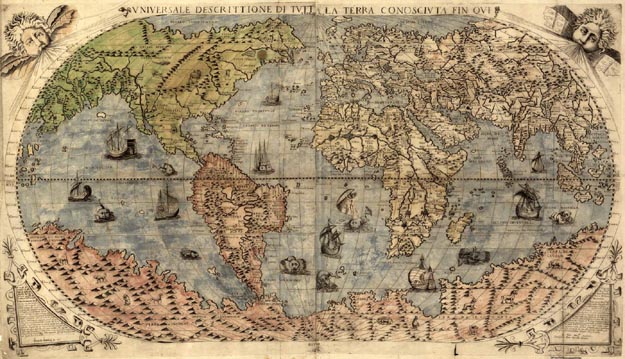
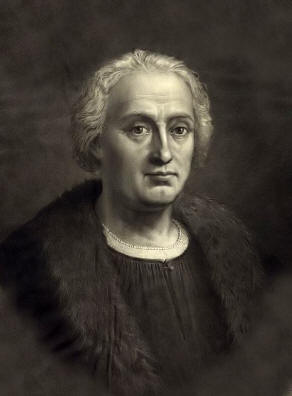 It
was the glory of Italy to furnish the greatest of the discoverers of
the
It
was the glory of Italy to furnish the greatest of the discoverers of
the 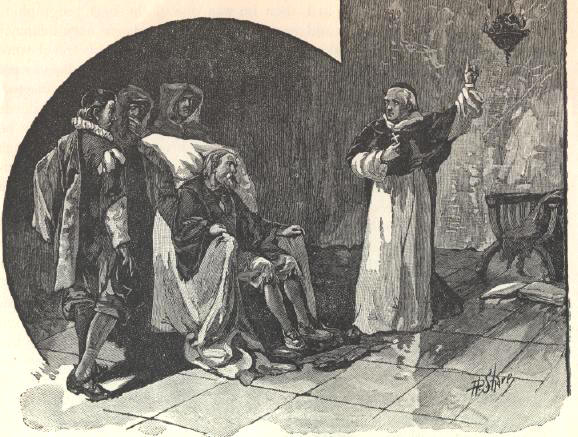
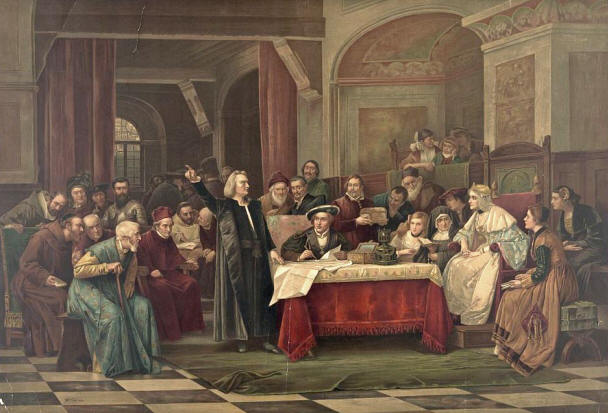
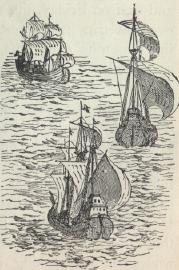 What
thoughts and apprehensions filled the heart and mind of Columbus as
he at last saw the yearning desires of years about to be met, may be
to some extent conceived; they certainly cannot be expressed. Not a
general at the head of his great army who, at a critical moment in
battle, sees the enemy make the false move which insures him the
victory, could feel more exultant than Columbus must have felt when
he left the presence of the Spanish Court, and, after seven years of
weary and all but hopeless waiting at last saw the possibilities of
the great unknown opening up before him, and beheld, in a vision to
him as clear and radiant as the sun shining in the heavens, a New
World extending its arms and welcoming him to her embrace. It would
seem as if everything now conspired to atone for the disappointing
past. His old tried friend, Perez, prior of the La Rabida monastery,
near Palos, received him with open arms, and well he might, for had
not his kind offices made success possible? And the authorities, as
if to make good the disappointments of seven years, could not now do
too much. All public officials, of all ranks and conditions in the
maritime borders of Andalusia were commanded to furnish supplies and
assistance of all kinds. Not only so, but as superstition and fear
made ship owners reluctant to send their vessels on the expedition,
the necessary ships and men were to be provided, if need be, by
impressments, and it was in this way vessels and men were secured.
What
thoughts and apprehensions filled the heart and mind of Columbus as
he at last saw the yearning desires of years about to be met, may be
to some extent conceived; they certainly cannot be expressed. Not a
general at the head of his great army who, at a critical moment in
battle, sees the enemy make the false move which insures him the
victory, could feel more exultant than Columbus must have felt when
he left the presence of the Spanish Court, and, after seven years of
weary and all but hopeless waiting at last saw the possibilities of
the great unknown opening up before him, and beheld, in a vision to
him as clear and radiant as the sun shining in the heavens, a New
World extending its arms and welcoming him to her embrace. It would
seem as if everything now conspired to atone for the disappointing
past. His old tried friend, Perez, prior of the La Rabida monastery,
near Palos, received him with open arms, and well he might, for had
not his kind offices made success possible? And the authorities, as
if to make good the disappointments of seven years, could not now do
too much. All public officials, of all ranks and conditions in the
maritime borders of Andalusia were commanded to furnish supplies and
assistance of all kinds. Not only so, but as superstition and fear
made ship owners reluctant to send their vessels on the expedition,
the necessary ships and men were to be provided, if need be, by
impressments, and it was in this way vessels and men were secured. 